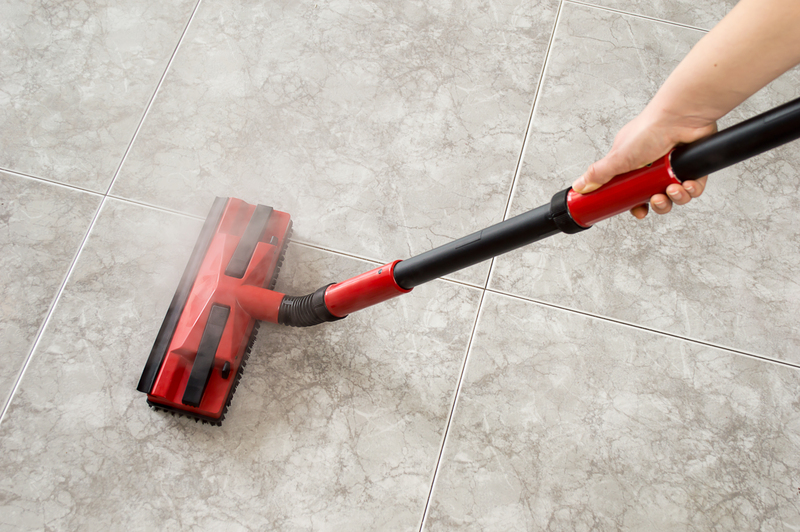Complex Solutions for Simple Pet Odor Problems
Posted on 12/09/2025
Complex Solutions for Simple Pet Odor Problems
Dealing with pet odors is a reality for millions of pet owners. While our furry friends bring immense joy into our lives, they can also leave behind persistent smells that seem impossible to eliminate. It's a common misconception that removing pet odors only requires simple cleaning. In truth, there are complex solutions that can effectively address even the most stubborn pet odor problems, ensuring a fresh, healthy, and welcoming home environment.
Understanding the Sources of Pet Odor
Before diving into effective strategies, it's crucial to understand where pet odors originate:
- Urine: Whether from cats or dogs, urine contains uric acid, ammonia, and bacteria that can soak into carpets, furniture, and floors, leaving behind lingering smells.
- Pet Dander and Saliva: Pets shed proteins through their skin and saliva. These microscopic particles can build up on surfaces and even circulate in the air.
- Wet Dog or Cat Odor: The combination of moisture and bacteria on your pet's fur produces an unmistakable musty scent.
- Accidental Residues: Vomit, feces, and hairballs can leave potent odors if not cleaned thoroughly and promptly.
- Litter Boxes and Cages: Improperly cleaned enclosures are breeding grounds for foul smells.
Knowing these odor sources, we can now explore why traditional cleaning routines often fail and why complex odor elimination methods are necessary.
Why Simple Cleaning Isn't Enough
Basic cleaning with soaps, air fresheners, or surface wipes typically masks odors rather than removing them. Most pet odors penetrate deep into fabrics, carpets, and porous materials. In many cases, the underlying problem is microbial, as bacteria and enzymes thrive in organic matter left behind by pets. This is why complex, multi-step solutions are needed for true pet odor removal.
Let's break down some of the most effective, science-backed approaches to tackling pet odor issues at their root.

Advanced Techniques for Lasting Pet Odor Elimination
1. Enzymatic Cleaners: The Science of Bio-Breakdown
Enzyme-based cleaners are among the most powerful tools for addressing deep-seated pet odors. These cleaning agents harness living enzymes that break down the organic molecules left by urine, saliva, and feces into odorless substances.
- Apply the cleaner liberally to affected surfaces and allow appropriate dwell time for enzymatic action.
- Use professional-grade enzymatic products for severe or old pet stains rather than generic grocery store brands.
- Repeat the process as needed, since persistent odors often require multiple applications.
Pro Tip: Always test enzyme cleaners on a small, hidden area first, as some fabrics may react differently to bio-cleaning agents.
2. Ozone Generators: Harnessing the Power of O3
Ozone generators are a complex yet highly effective solution for serious pet odor challenges. These devices generate ozone molecules (O3), which chemically react with odor-causing compounds, breaking them apart at the molecular level.
- Ozone treatments are best used in unoccupied spaces, as high concentrations of ozone can be unsafe for pets and humans during operation.
- Run the ozone generator in the affected room for an appropriate cycle (usually one to several hours), then ventilate thoroughly.
- This method is particularly effective for whole-room decontamination, including walls, air ducts, and hidden nooks.
Warning: Ozone should be used according to manufacturer instructions, and never with people or pets present.
3. HEPA Air Filtration: Cleaning the Invisible
Even after surfaces are treated, pet odors can linger in the air. High-efficiency particulate air (HEPA) filtration units help clear airborne particles and odor molecules:
- Use HEPA purifiers in main living areas to trap pet dander, dust, and other tiny allergens.
- Many advanced air purifiers include activated charcoal filters specifically designed for odor adsorption.
- Run the filtration system consistently for best results, especially during shedding seasons.
4. Vapor Steam Cleaning: Deep Fabric and Carpet Revitalization
Pet accidents often seep below the carpet or upholstery surface where surface cleaners can't reach. Vapor steam cleaners blast superheated, pressurized steam into fabrics, simultaneously killing bacteria and loosening embedded odors.
- Vapor steam is especially effective for carpets, mattresses, sofas, and even drapes. It can sanitize and lift stains as well as odors.
- Always allow fabrics to dry thoroughly after steam cleaning to prevent mold and mildew, which can themselves cause odors.
- For severe infestations, professional steam cleaning may be advised.
5. Sub-floor and Wall Treatment: Going Beneath the Surface
In extreme cases, such as repeated soiling in the same spot, pet odors can penetrate through carpets and padding into sub-floors, or be absorbed by drywall:
- Remove carpet and padding if multiple treatments have failed and inspect the subfloor for staining or odor.
- Treat affected wood or concrete with enzymatic or oxidizing solutions specifically formulated for those materials.
- In some cases, sealing the subfloor or wall with a specialized primer is necessary after treatment to lock in any remaining odor particles.
Professional-Grade Pet Odor Removal Solutions
Sometimes, the problem is beyond the capabilities of home remedies. Odors that linger for months, permeate entire rooms, or result from major accidents may need professional intervention:
- Certified odor removal experts use industrial-strength enzymatic treatments, thermal fogging, and ozone shock treatments.
- They may employ black lights or specialty UV equipment to locate hidden urine deposits invisible to the naked eye.
- Professional-grade air scrubbers and dehumidifiers ensure all airborne particles and humidity (which can worsen odors) are addressed.
Choosing a reputable, certified company guarantees the
Preventing Future Pet Odor Problems
While the above solutions address existing issues, prevention is always preferable. Incorporate these best practices to keep future odors at bay:
Routine Cleaning and Maintenance
- Vacuum daily with a high-efficiency (HEPA) filter to remove dander and shed fur from carpets and upholstery.
- Launder pet bedding, blankets, and cushions weekly in hot water with a pet-safe enzyme detergent.
- Clean litter boxes, cages, and aquariums every day; replace litter completely at least once a week.
- Wash hard floors frequently with a disinfectant compatible with pets (no bleach unless thoroughly rinsed).
Pet Hygiene and Grooming
- Bathe pets as necessary (but not too frequently, as overwashing can damage fur and skin chemistry).
- Brush regularly to minimize loose dander and fur around the house.
- Consider professional grooming for breeds with heavy undercoats or oily fur that holds odor.
Diet and Health Considerations
- Monitor your pet's diet to prevent digestive issues, which can amplify fecal and urine odors.
- Address any underlying health problems that could cause excessive shedding, oily skin, or frequent accidents.
- Use supplements like probiotics and omega-3s as recommended by your veterinarian for optimal skin and coat health.
DIY Complex Solutions: Household Chemistry for Pet Odors
Baking Soda and Activated Charcoal
For a budget-friendly but complex, multiphase approach:
- Sprinkle baking soda on carpets, couches, and mattresses to neutralize acids in pet odors. Let it sit overnight for best results, then vacuum thoroughly.
- Place bowls of activated charcoal in odor-prone rooms to passively absorb smells at the molecular level.
- Replace charcoal monthly to maintain effectiveness.
Vinegar and Essential Oil Spray
- Mix equal parts white vinegar and water, add a few drops of pet-safe essential oil (like lavender, cedarwood, or lemongrass). Use as a spray for fabric, floors, and kennel areas.
- Vinegar neutralizes ammonia in pet urine and leaves no lingering chemical residues.
- Always spot test and use essential oils that are confirmed safe for pets.
Hydrogen Peroxide Mix for Stains and Odors
- Hydrogen peroxide (3%) can break down organic stains. Mix with a little baking soda and dish soap.
- Apply to stubborn areas like urine spots or vomit stains. Allow to bubble and dry before scrubbing clean.
- Beware of bleaching on colored fabrics or carpets; test before applying widely.
Common Mistakes in Pet Odor Remediation
Even with the best intentions, pet odor treatment can go wrong:
- Using the wrong products: Not all cleaners are pet-safe or effective against organic odors. Avoid ammonia-based cleaners, which can mimic urine scent and encourage repeat marking.
- Masking, not solving: Heavy perfumes and sprays only cover up the problem and can make the home more irritating for sensitive noses.
- Incomplete cleanup: Skipping deep layers, subflooring, backside of carpets, or air ducts can allow odors to persist indefinitely.
- Neglecting pet health: Not treating the root cause--like ongoing accidents due to medical issues--means the problem will return.
- Ignoring proper drying: Damp fabrics and carpets can lead to mildew, creating an entirely new odor issue.

The Future of Pet Odor Control: Tech and Innovation
The battle against pet odors is evolving with technology and research. Here are some innovative solutions hitting the market:
- Smart sensors: App-connected sensors can detect high humidity and volatile organic compounds in the air, alerting you before odors become severe.
- UV-C air sanitizers: These devices use short-wavelength ultraviolet light to kill bacteria and neutralize airborne odors.
- Self-cleaning litter boxes and pads: Robotic systems now automatically manage waste, drastically reducing odor in multi-pet households.
- Biological treatments: Scientists are developing tailored bacteria cultures to outcompete odor-producing microbes in home environments.
Conclusion: Achieving a Fresh, Odor-Free Home
Pet ownership doesn't mean accepting unwanted smells. By understanding the complexities of pet odor formation and employing detailed, multi-layered strategies, you can keep your home both clean and inviting. From enzymatic cleaners and ozone shock treatments to smart sensors and proper prevention, these complex solutions for simple pet odor problems guarantee peace of mind - for you and your four-legged family members.
By leveraging both science and smart habits, it's possible to banish even the toughest pet odors for good. Now, you can enjoy your pets and your home - odor free!


